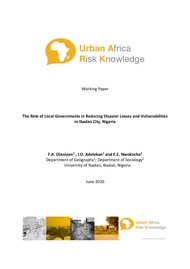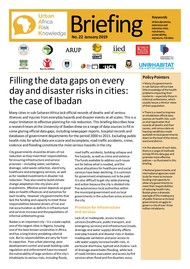Extensive Risk Thematic Note

The United Nations International Strategy for Disaster Reduction (UNISDR) has led a move to encourage and support governments to greatly improve the accuracy and detail in their records on disasters. One key element of this is the collection of data on ‘small’ disasters and their impacts that do not get included in national and international disaster databases. UNISDR made the distinction between ‘intensive disasters’ (currently when 30+persons killed and/or 600+ houses destroyed) and ‘extensive disasters’ (events recorded as disasters but with impacts below these two thresholds). Drawing data from over 80 countries, UNISDR analyses show the importance of attention to extensive disaster risk both in terms of impact (eg mortality, injury and economic losses) and in terms of what underpins or drives it. What is still unclear is the extent to which extensive risk covers all premature deaths. An important threshold remains separating extensive risk from most everyday hazards that cause premature death or injury – for instance, a flood which kills one person may be included but an infection that kills a three year old child is not. Further, although the UNISDR Global Assessment Reports discuss in some detail disaster loss in urban areas and its underpinnings, the disaster loss data these present are not disaggregated into urban and rural areas.
Cite this publication
Available at https://www.iied.org/21776g






